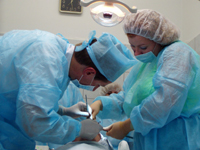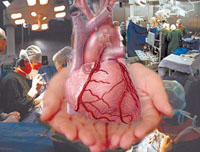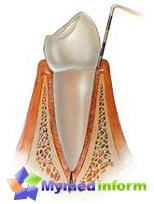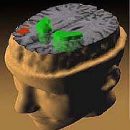How the laparoscopic operation is carried out? And how is an open operation to remove the spleen? Which method to choose? Answers to these questions you will find in the article.
Content
The diseases of the spleen can be divided into several groups:
 The first group is diseases in which the spleen instead of the destruction of old and damaged blood cells begins to destroy healthy, which leads to a violation of those mechanisms of activity in the body depending on the presence of blood cells. The change in the normal functioning of the spleen is due to the fact that due to some pathological processes, healthy blood tales are marked as affected. Such diseases include autoimmune thrombocytopenia, in which the spleen destroys healthy platelets, and hemolytic anemia when healthy red blood cells are destroyed.
The first group is diseases in which the spleen instead of the destruction of old and damaged blood cells begins to destroy healthy, which leads to a violation of those mechanisms of activity in the body depending on the presence of blood cells. The change in the normal functioning of the spleen is due to the fact that due to some pathological processes, healthy blood tales are marked as affected. Such diseases include autoimmune thrombocytopenia, in which the spleen destroys healthy platelets, and hemolytic anemia when healthy red blood cells are destroyed.
- The second group of diseases is tumors of the spleen, leading to a violation of the normal operation of the organ, among them are found both benign and malignant, for example, lymphoma.
An increase in the size of the spleen is observed, for example, in malaria and other parasitic diseases, when infecting blood (sepsis), diseases of the hematopoietic system - thrombocytopenic anemia, leukemia, Hodgkin's disease.
Diseases such as autoimmune thrombocytopenia are made to be treated with steroid hormones that change the pathological reaction of the immune system. In some chronic diseases and development of tumors, part of therapeutic process is to remove the spleen. Until recently, this operation was carried out through a wide incision of the anterior abdominal wall, but lately it is increasingly laparoscopically. This technique began to be applied from 1992 and at present the increasing number of disposal of the spleen is performed in micro-operating techniques.
Laparoscopic operation
The patient is under general anesthesia. The surgeon performs a small incision in the left side of the abdomen or in the navel area a small incision through which the laparoscope introduces (tube), it is equipped with a video camera and optical fiber, illuminating the abdomen. The camcorder sends an image to a special screen, which allows the surgeon to see the whole picture. With the help of several additional small holes, it introduces special equipment by which the spleen is separated from the fabrics around it, and its blood vessels are invented. Now the spleen is completely separated from the rest of the fabrics, and it is placed in a special hermetic bag, which is also introduced into the abdominal cavity. The neck of the bag closes, after which the vacuum suction removes the contents of the bag outward.
The main advantages of the laparoscopic operation include the fact that this process does not cause such severe pain, as traditional surgery, and also leads to much more rapid recovery. In addition, very small size of the operating holes allows much more effectively to prevent the development of postoperative infections. As a rule, the patient is discharged home in one or two days after the operation and during the week it returns to a normal lifestyle.
Open operation
Sometimes there are patients who have no laparoscopy or undesirable. This happens when using the micro-operating tools it is impossible to separate the spleen from the surrounding tissues, or when the anatomical structure of the abdominal bodies is such that the lenses of the camcorder do not create on the screen of a clear image. Certain restrictions on the use of the laparoscopy method imposes and a significant increase in the size of the spleen, although in cases where the diameter does not exceed 20 cm, a special laparoscopic instrument has been created.
In each case, the decision on the method of removal of the spleen removal of the surgeon accepts after a careful examination of the patient. It also happens that the operation, originally scheduled as laparoscopic, in the course of the case requires the transition to «Open» Operation.
Possible complications after surgery
 Any operation, regardless of the way it sometimes causes complications, first of all, this infection and bleeding. It should be noted that with microerations complications are less common.
Any operation, regardless of the way it sometimes causes complications, first of all, this infection and bleeding. It should be noted that with microerations complications are less common.
The most disturbing complication, fortunately, which is found in exceptional cases, is microbial infection that is very difficult to treat due to the fact that the removal of the spleen is extremely weakened by the activity of the immune system. To prevent this complication, every patient who has passed the surgery to remove the spleen, gets vaccinated against the most common microbes that can cause infection. Additionally, antibiotic treatment is recommended for any microbial inflammation, and it should be started as early as possible. In some cases, the attending physician prescribes a patient a prophylactically long course of antibiotics. In addition, there is an extremely small risk of lesion of other internal organs, such as stomach, pancreas, etc.
In isolated cases, subiaphragmal inflammation occurs, which requires cleaning the focus of inflammation. Such cleaning is usually carried out through a hole in the skin, but sometimes it takes another full-fledged operation.
After a laparoscopic removal of the spleen, the patient can return to ordinary life in about a week, including walking, driving a car, lifting the stairs, raising objects and sex life. If the temperature of about 37 appears.5 hail., Chills, vomiting, difficulty in urination or unpleasant sensations in the field of operating seams, the patient should urgently apply to the operating surgeon.









